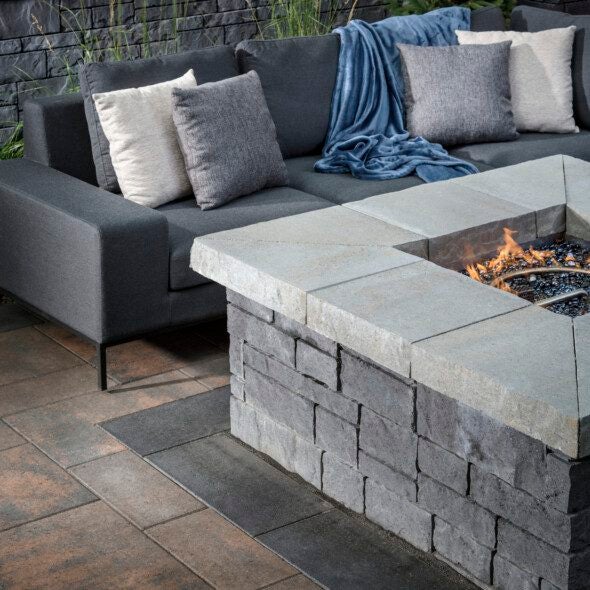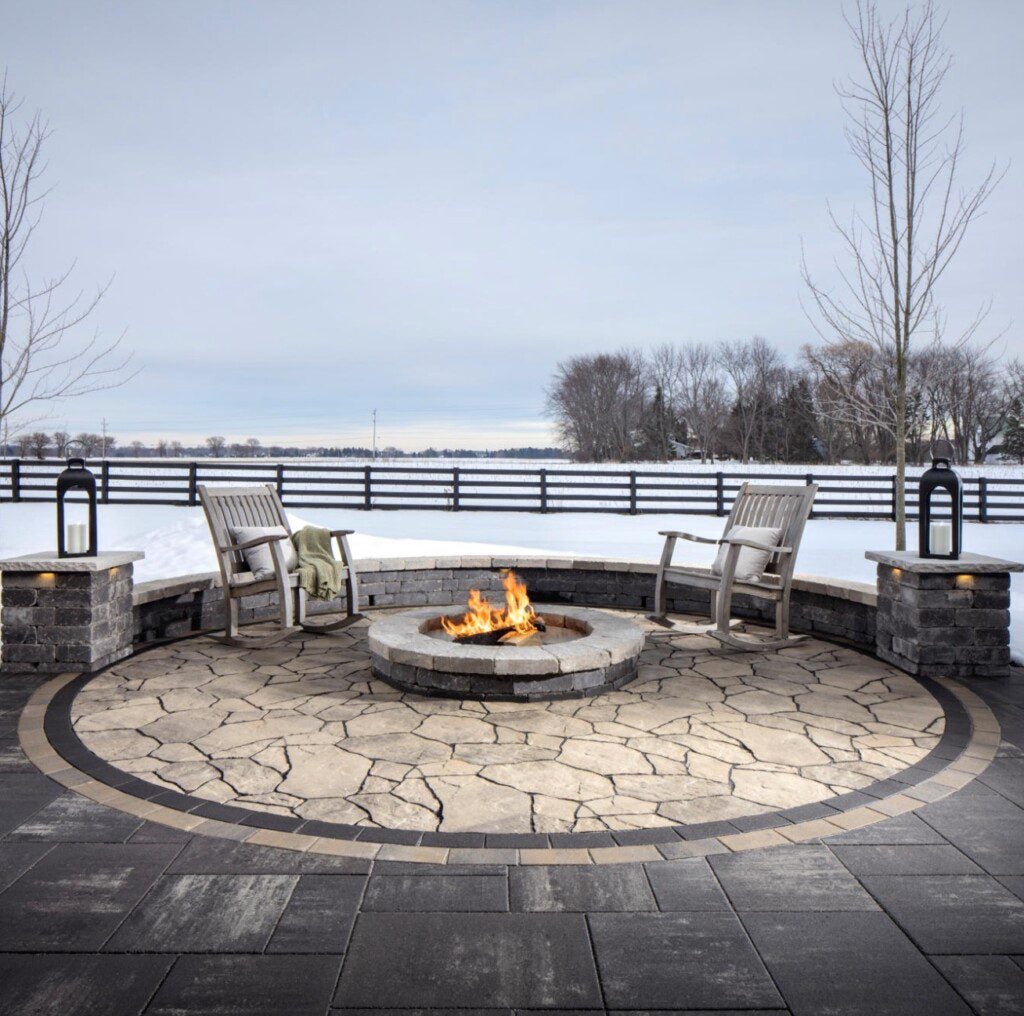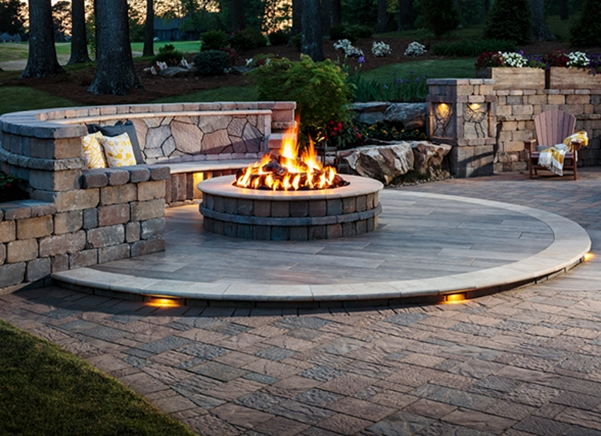The end of the calendar year is fast approaching, which means winter is right around the corner. Now is the time to perform seasonal hardscape maintenance and winter prep for your outdoor patio, living area and hardscapes. A little effort in the fall can go a long way in making sure your outdoor space makes it through the cold in good shape for the spring.
1. Pamper Your Pavers
Pavers are designed to withstand the harsh elements and a variety of weather conditions. However, pavers still need a little help to stand up against winter’s cold, ice and snow. Here are four easy ways to winterize your pavers:
- Clean Up Debris—Be diligent and keep your pavers clean. Regularly remove sticks, leaves, pine needles or other organic matter from your pavers. Imprinted brown leaf marks and other stains from wet or decaying debris can be unsightly.
- Check Water Runoff—During your next rain, assess your gutter downspout flow onto your pavers. Letting that water freeze during a cold snap can be detrimental to the life of the pavers as ice can cause cracks and weaken them. Redirect your downspouts into your lawn or landscape border. A downspout extension comes in handy if your lawn or landscaping is farther away.
- Move Heavy Items—Patio heavyweights like furniture, large flower pots and other décor can cause sunken spots to form during wet or freezing weather. Move these items to a shed, garage or onto the lawn.

- Seal it Up—Hardscape sealant prevents water and ice damage, which can degrade the surface of pavers over time. Techniseal® Sealant is a solid choice as it protects pavers from water and ice, as well as keeps contaminants like acids, alkalis and deicing salts from penetrating and damaging pavers. Applying proper sealant every three years is recommended. However, too much sealant leaves a film on pavers that can cause discoloration.
2. Remove Snow

Shoveling
If you live in an area where it snows regularly, removing snow the right way is key. When clearing snow from your pavers, do not use a metal shovel or those with sharp blades and points that can scratch or crack the surface of your pavers. Use a sturdy, plastic shovel instead. You can always opt for a snowblower. Just make sure to set the depth gauge to at least 1/8” above the pavers since many have a dimpled, uneven texture to enhance aesthetics and reduce damage.
De-Icing
Select the right de-icing agent to use on paver patios, walkways and driveways. Be careful with salt-based de-icers, which can cause hardscapes to degrade more quickly. Opt for a paver-safe product instead, such as magnesium chloride, to keep pavers intact. A sodium-free ice-melt product like this one from Enviro-Thaw is a safe solution. Everything About Concrete has a good roundup of which de-icers are best for specific areas, and you can compare de-icers across three main categories: environment, temperature and corrosive properties.
3. Insulate Outdoor Water Valves and Exposed Pipes
When temperatures dip below 32 degrees, water can freeze inside pipes and when the ice expands, it can cause the pipe to burst. The burst pipe can lead to an intense flooding situation, which is why insulating pipes lowers their exposure to the elements and reduces the chance of disaster. You can use a pipe sleeve, pipe-wrap, or outdoor faucet cover.

4. Clean Patio Furniture and Cushions
To make your patio furniture and cushions last longer, clean and store them over winter. For furniture, wipe it down to remove dirt and pollen, then use mild dish soap and water to clean it. Cushions can be cleaned with soap and water or a mix of water and white vinegar. Make sure that both the furniture and cushions are dry before storing to prevent mold and mildew.
5. Prepare Your Yard
If your patio and outdoor space looks out over a nice, grassy backyard, it could use a little TLC before winter hits. Remove fallen leaves scattered across your yard by raking and bagging or mulching them with your lawn mower. One idea is to add leaves to your flower beds. If you have a mower with a bagging attachment, just collect the mowed leaves and spread them in your garden to enhance your soil for next spring. Fortify your lawn for the winter by applying a winter-specific fertilizer. If the fall has been extra dry, continue to water until the first frost is coming. Ample moisture in your lawn will prevent snow mold and blight pathogens. You’ll have a leg up on your work in the spring if you tackle any weeds you see now. In addition, you’ll see more spring blooms if your early flowering plants don’t have to compete with weeds for precious early resources. Pull weeds by hand, or spray them so they don’t get a chance to develop roots between freezes.


